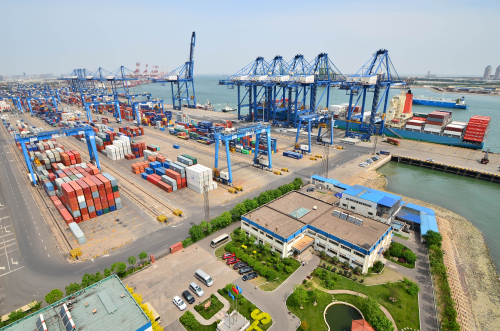 |
|
READY TO GO: A wharf of the Tianjin Port is filled with cargo on May 14 (CFP) |
A plan to set up a free trade zone (FTZ) in north China's Tianjin Municipality has reportedly been approved by related ministries and is awaiting the final go-ahead from the State Council. Covering an area of 64.5 square km, the new Tianjin FTZ will be twice as large as the Shanghai FTZ.
It will be divided into the Dongjiang Bonded Port Zone, Tianjin Port Bonded Zone and central business district in east Tianjin's Binhai New Area. Modern logistics, shipping, storage and goods trade will develop based on the two ports, while Binhai New Area will serve as a platform for the development of financial industry and service trade.
Tianjin submitted the FTZ plan in July 2013, following the approval of the Shanghai FTZ. The plan stated that local government would invest up to 60 billion yuan ($9.8 billion) within five years to reclaim land from the sea and expand the area of the Dongjiang zone, according to media reports.
"The original plan only included the Dongjiang port zone. The State Council then replied that the FTZ could expand its area for future development," a source close to the Tianjin Municipal Government told financial news agency AAStocks.
In October, the State Council approved the expansion of Tianjin Port, with an added 1,120 square km of new water area and more than 70 new berths. It's reported that the expansion plans also laid a solid foundation for Tianjin to explore the opportunity to set up an FTZ.
On October 27, Chinese President Xi Jinping said the Shanghai pilot FTZ reforms can bear fruit elsewhere. "The model behind the pioneering China (Shanghai) Pilot Free Trade Zone should now be copied at other suitable sites across the country where conditions are ripe," Xi said at a central conference on comprehensively bolstering reform.
Zhang Jianping, a research fellow with the Institute for International Economic Research under the National Development and Reform Commission, forecasted that Tianjin will very likely become the first FTZ in north China.
Bai Ming, a research fellow with the Chinese Academy of International Trade and Economic Cooperation (CAITEC), said the whole point of establishing an FTZ is to further open up to the world.
Tianjin is not the only section that is trying to grab a piece of the pie from the FTZ trials taking place throughout the country. Coastal provinces, including Guangdong and Fujian, are among the most likely sites to host the next batch of FTZs.
The national expansion of FTZ model follows the dazzling achievements of the one-year-old Shanghai FTZ.
The 29-square-km zone in the Chinese financial hub promises free trade, greater financial openings and fewer government controls over business activities.
Spurred by the zone's auspicious outlook, over 12,000 businesses have registered in the Shanghai FTZ during the past year, more than all the companies set up in Shanghai's bonded areas during the past two decades. The Shanghai FTZ has introduced a total of 21 innovative administrative measures that could be duplicated elsewhere in the country: six in investment management, six in financial innovation and nine in trade promotion.
Different from Shanghai
Bai believes that Tianjin will actively seek to take advantage of its singular position in the next round of FTZ-driven development.
"With the integration of Beijing, Tianjin and Hebei Province, more and more resources will be mobilized to give more chances to Tianjin FTZ," Bai said.
| 